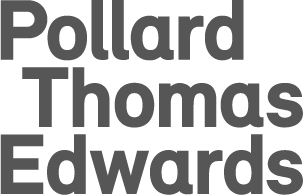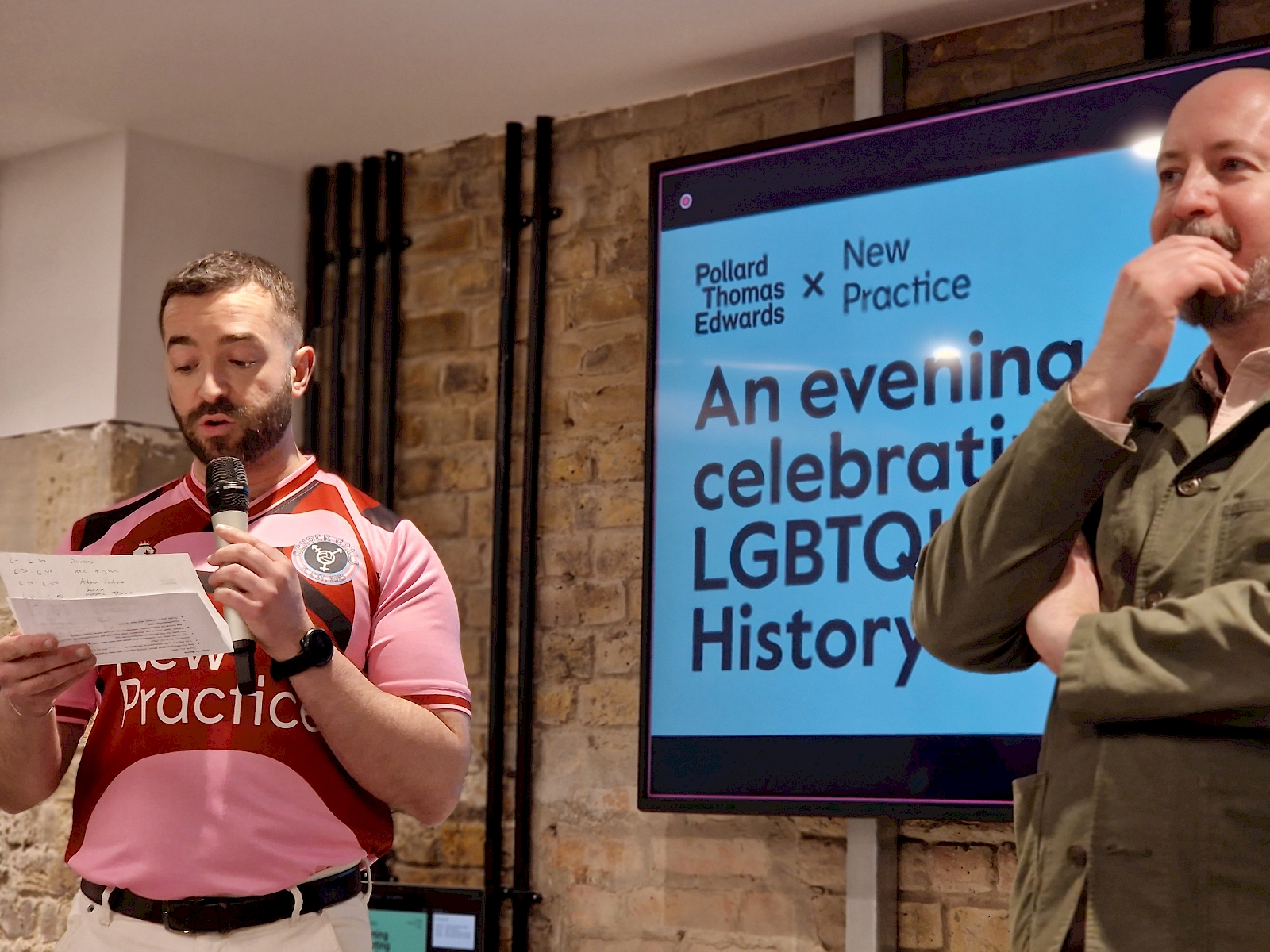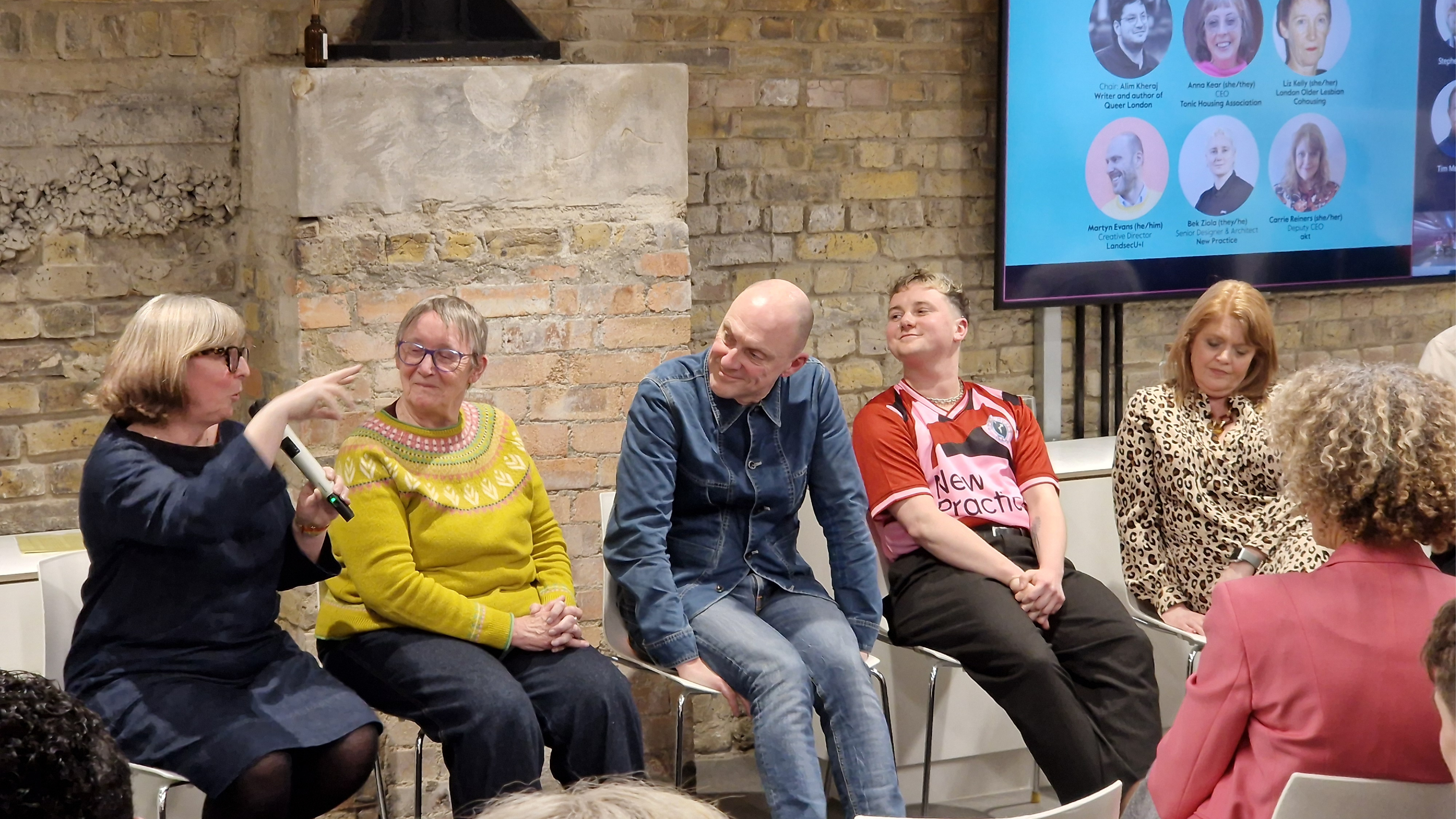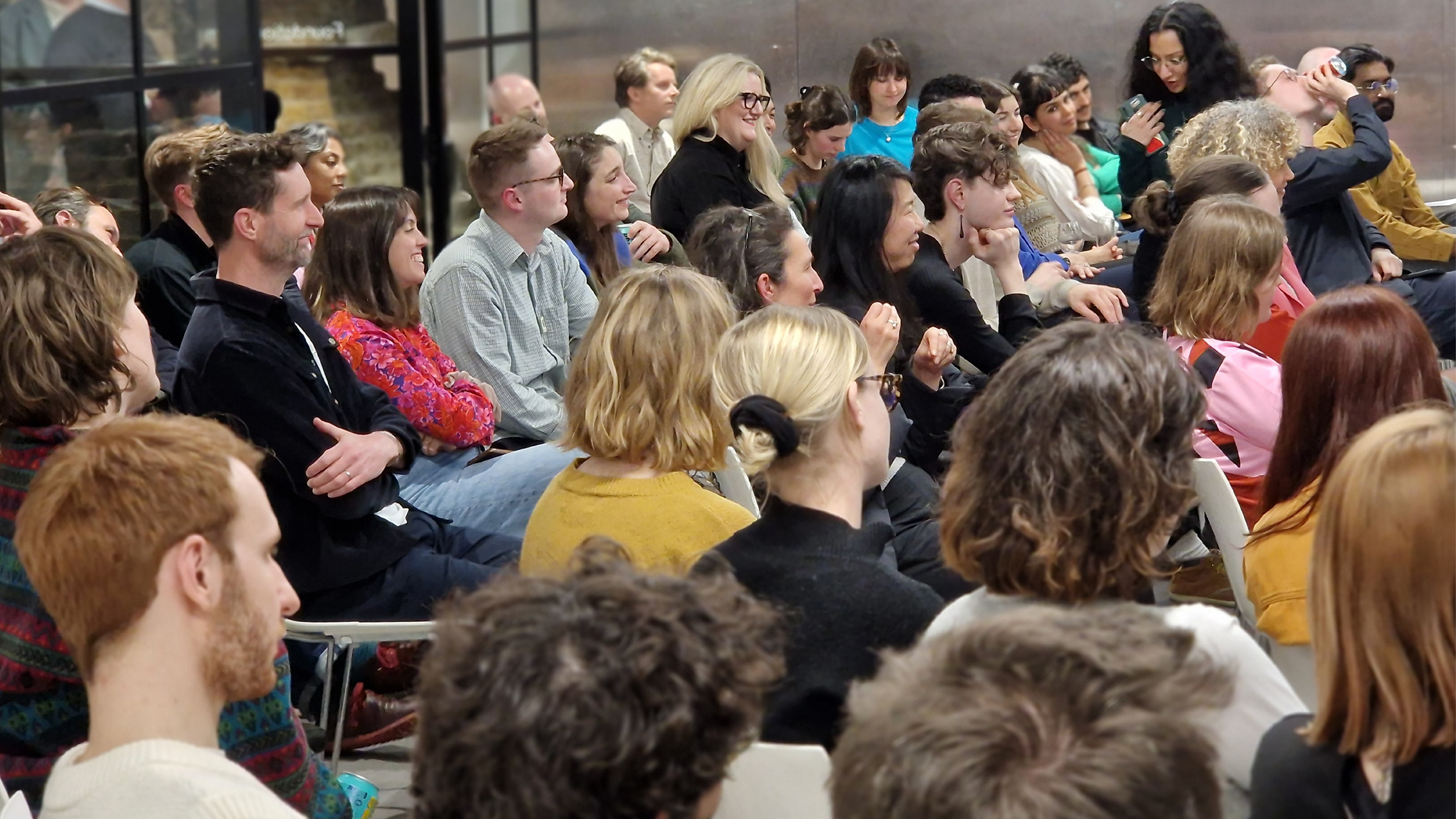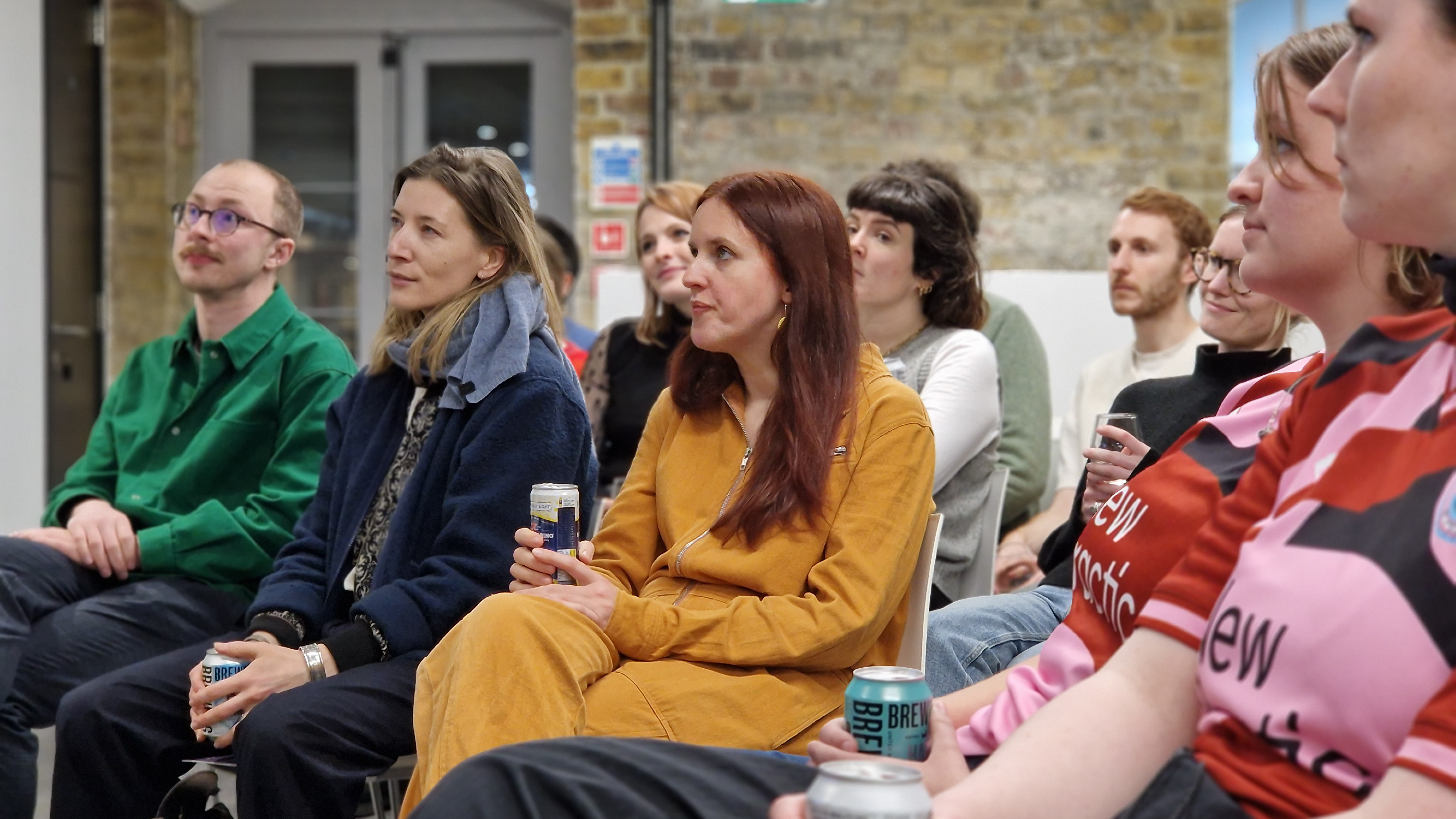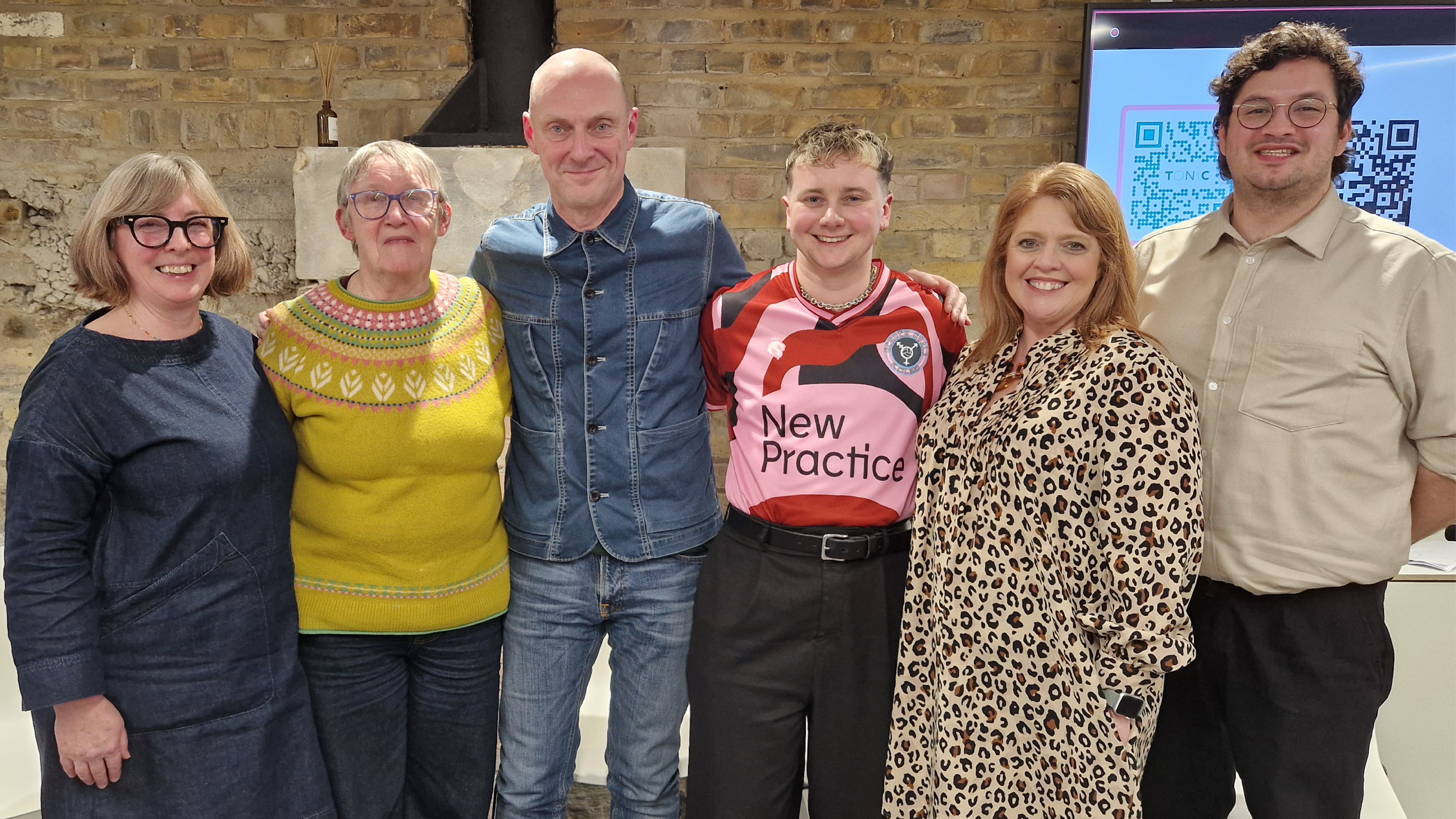Our February conference day focused on Inclusivity or how to build a contemporary practice where nobody is left behind
Our Inclusivity conference day began at 66 Portland Place with a tour of FAME collective’s provocative exhibition in the RIBA library. Curated by its founder Tumpa Husna Yasmin, Exposing the Barriers in Architecture from a FAME Perspective, shines a light on the challenges and inequalities faced by ‘females with minority ethnic’ backgrounds in architecture education. Its methodology is simple - lived experience as research, with FAME students speaking for themselves.

We also visited Wide-Angle View, an exhibition on the Manplan series, an exploration of architecture’s impact on society first published in The Architectural Review in 1969. Using black and white photography - much of it on show at the RIBA - of postwar townscapes, we get to the essence of Manplan and its humanist take on Modernist Britain - its transport and communications, education, religion and housing.

Before exploring the galleries, however, partner Marion MacCormick spoke about how equality, diversity and inclusion shapes our own practice at Pollard Thomas Edwards while writer and critic Rory Olcayto spoke about diversity in architectural history, specifically on how ‘othered’ historical figures – like Muslim Renaissance architect Mimar Sinan or prolific female British Modernists like Scotland’s Margaret Brodie – are only now being fairly recognised after decades of exclusion.

Equity, Diversity, Inclusion (EDI) workshop
At the EDI workshop Marion and Tricia Patel explained what equity, diversity and inclusion mean in practice. Together we explored the nine ‘protected characteristics’ identified in the Equality Act 2010 and discussed PTE’s desire to go further, perhaps adding neurodivergence. The workshop saw colleagues split into teams to discuss NLA’s Diverse Leaders Pledge, which we plan to sign up to, identifying actions we could take to honour the NLA pledges. These ranged from appointing a diversity champion and encouraging staff candidates to feedback to us, post-interview and introduce ‘reverse mentoring’.

Inclusive working with Fisher Cheng Architects
Our next session was a kind of show and tell by Fisher Cheng Architects, a young practice doing interesting work that resonates with our own outlook. Co-founder Yuting Cheng led us through their key projects – a community centre on the Gascoigne estate and a terrace of 28 affordable homes for the Meridian Water regen scheme in Enfield. But we also learned about their methodologies- ‘we think of what we design as social infrastructure’ – and projects where ‘sometimes architecture isn’t the answer’ that saw Fisher Cheng working with a local poet and publishing a multi-language newspaper.

An evening celebrating LGBTQIA+ History Month
Our conference day extended into the evening, with a special event, co-curated by PTE partner Stephen Morris and New Practice co-founder Marc Cairns, celebrating LGBTQIA+ History Month. Chaired by writer and author of Queer London, Alim Kheraj, our five guest speakers - with collaboration, community and custodianship in mind - discussed how their identity and experience shapes their professional practice.
Anna Kerr, CEO of our client, Tonic Housing, spoke evocatively of the pressing need for creating vibrant, inclusive later living home for urban queer communities. On similar ground, Liz Kelly, another client and the chair of London Older Lesbian Cohousing, demonstrated the power of community to create radical new ways of living together.
In a bid to create a more popular understanding of the intersectional challenges facing the LGBTQIA+ community, Martyn Evans, Creative director at LandsecU+I, told his own story with family photos and personal memories – and encouraged others to do the same.
Next, Bek Ziola, architect and senior designer at New Practice, spoke about their trans experience in the industry and their current work on the National Transgender Monument in Manchester.
The last speaker was Carrie Reiners, Deputy CEO of charity akt, who shared their story working secure safe homes and better futures for young lgbtq+ people aged facing hostility, exclusion and insecurity.
Chair for the night Alim Kheraj then opened the debate to the audience, with the question, ‘what defines a queer space?’. Unsurprisingly, after five incredible speakers had inspired us all, a passionate dialogue ensued.


